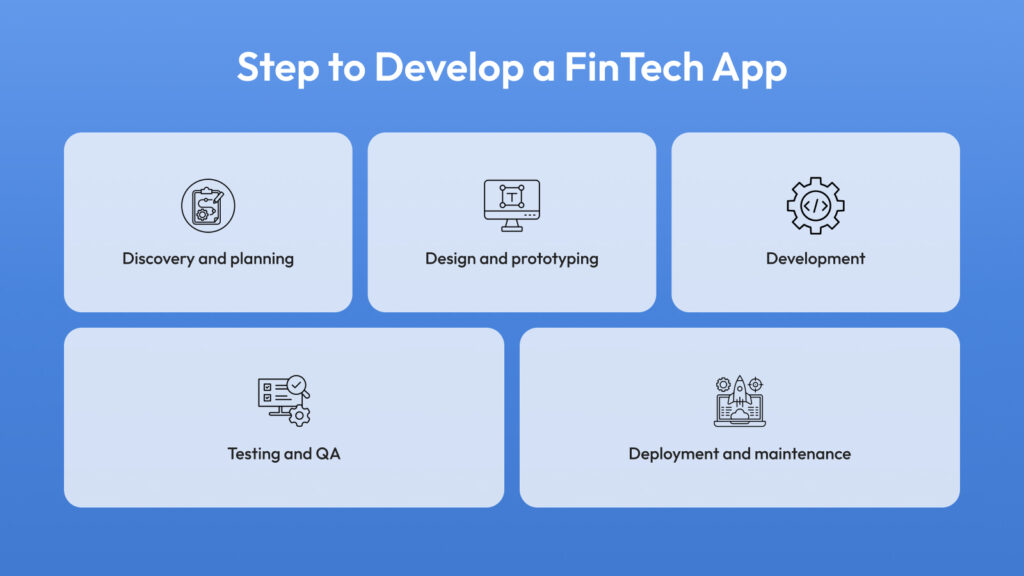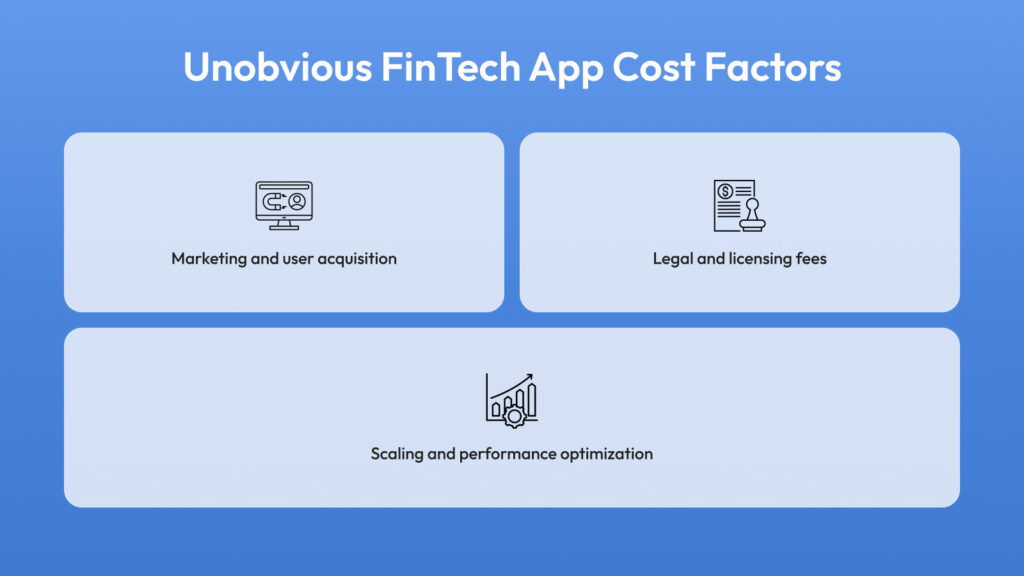In the rapidly evolving world of financial technology (FinTech), creating an app that stands out is crucial for success. Whether you’re a startup or an established financial institution, understanding the cost implications of developing a FinTech app is essential. Leverage AI in E-commerce to create a FinTech app that offers personalized financial solutions and seamless payment experiences, enhancing customer satisfaction and driving business growth. This comprehensive guide will break down the factors influencing the cost, the stages of development, and provide an estimated range for your budgeting needs.
What Influences the Cost of FinTech App Development
The cost to develop a FinTech app is definitely can’t be defined initially. It strongly depends on your unique requirements, demands, and business needs. However, here’s what you can consider in general:
Complexity and Features
The complexity and range of features you want to include in your app are primary cost drivers. Big data in e-commerce can be leveraged to predict customer behavior and optimize financial services within a FinTech app. A basic FinTech app with fundamental features like user registration, basic account management, and transaction capabilities will cost significantly less than an advanced app with features such as real-time analytics, AI-driven insights, and blockchain integration.
Design and User Experience (UX)
A well-designed app with an intuitive user interface is more likely to attract and retain users. Investing in high-quality design is crucial, but it also adds to the overall cost. Custom animations, seamless navigation, and personalized user experiences are elements that require skilled designers and additional development time.
Development Team and Location
The cost of development varies greatly depending on the location of your development team. For instance, hiring developers in North America or Western Europe tends to be more expensive than outsourcing to countries in Eastern Europe, Asia, or Latin America. Additionally, the choice between hiring in-house developers versus outsourcing or engaging a development agency can impact costs.
Technology Stack
The choice of technology stack (programming languages, frameworks, and tools) also affects the cost. While some technologies might be more expensive due to licensing fees or the need for specialized skills, they might offer benefits such as better performance or security, which are crucial for FinTech applications.
Compliance and Security
FinTech apps handle sensitive financial data, making compliance with regulations (such as GDPR, PCI-DSS, and AML) and ensuring robust security measures mandatory. Leverage Robotic process automation (RPA) to streamline back-office operations and enhance efficiency in your FinTech app. Implementing these features requires specialized knowledge and increases the development cost but is non-negotiable given the nature of the app.
Stages of FinTech App Development

To make the process of FinTech app development smooth and seamless, you should consider a strict structure first. To hint you on this, here’s what you can do:
Discovery and planning
The initial stage involves understanding the market, defining the app’s features, and creating a project roadmap. This phase often includes:
- Market research
- Defining user personas
- Creating a feature list
- Developing a minimum viable product (MVP) plan
The cost for this stage can range from $10,000 to $50,000 depending on the depth of research and planning required.
Design and prototyping
During this phase, the user interface (UI) and user experience (UX) designs are created. Key activities include:
- Wireframing
- UI/UX design
- Interactive prototyping
Expect to spend between $15,000 and $60,000 depending on the complexity and quality of the design.
Development
This is the most intensive and expensive phase, where the actual coding of the app takes place. It includes:
- Front-end development
- Back-end development
- Integration of third-party services
The development cost can vary widely. For a basic app, it might range from $50,000 to $100,000, while a more complex app with advanced features can cost from $200,000 to $500,000 or more.
Testing and QA
Quality assurance (QA) ensures that the app functions correctly and is free of bugs. This stage includes:
- Functional testing
- Performance testing
- Security testing
- User acceptance testing (UAT)
Budgeting for QA is essential, with costs ranging from $10,000 to $50,000 depending on the scope and duration of testing.
Deployment and maintenance
After development and testing, the app is deployed to app stores and servers. Post-launch, ongoing maintenance is necessary to fix bugs, update features, and ensure compatibility with new OS versions. This stage involves:
- App store deployment
- Server setup
- Ongoing support and maintenance
Initial deployment might cost between $5,000 and $20,000, with ongoing maintenance ranging from $10,000 to $50,000 annually.
Total Cost Estimate
Summing up all the stages, here’s a rough estimate for developing a FinTech app:
- Basic FinTech App: $90,000 to $200,000
- Moderately Complex App: $200,000 to $400,000
- Highly Complex App: $400,000 to $1,000,000+
Hidden Costs to Consider

Here is what you should keep in mind before FinTech app development:
Marketing and user acquisition
Building the app is only part of the equation. Attracting and retaining users require a solid marketing strategy, which includes social media campaigns, paid advertising, and content marketing. Allocate a budget of $50,000 to $200,000 for initial marketing efforts.
Legal and licensing fees
Ensuring that your app complies with all legal and regulatory requirements can incur additional costs. This might include obtaining necessary licenses, legal consultations, and setting up data protection measures.
Scaling and performance optimization
As your user base grows, you’ll need to invest in scaling your infrastructure to maintain performance and reliability. This could involve upgrading servers, optimizing code, and integrating advanced analytics tools to monitor app performance.
Conclusion
The cost to build a FinTech app is influenced by numerous factors, including app complexity, design quality, team location, technology stack, and compliance requirements. It doesn’t matter whether you want to create an investment app, lending app, or banking app. The main budgeting principles remain the same. By understanding these factors and planning accordingly, you can budget effectively and ensure the successful development and launch of your FinTech app. Whether you are looking to build a basic app or a feature-rich platform, investing in quality development and robust security measures is crucial for long-term success in the FinTech industry.



